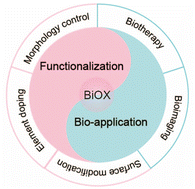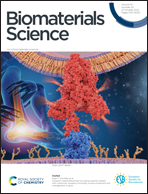Recent developments in bismuth oxyhalide-based functional nanomaterials for biomedical applications
Abstract
Multifunctional bismuth oxyhalide (BiOX, X = F, Cl, Br, and I) nanomaterials have great potential advantages in medical diagnostic and therapeutic applications. Pure BiOX nanomaterials have some limitations such as limited light absorption range, easy electron–hole recombination, and large nanoparticle size. It is widely assumed that proper functionalization of BiOX nanomaterials can compensate for these flaws and notably improve performance. Due to easy modification of the structures, the multi-functionalization of BiOX nanomaterials can be realized. These nanomaterials can be applied as sensitizers against tumor and bacterial proliferation, as well as contrast agents for computer tomography (CT) imaging, photoacoustic (PA) imaging, and other forms of imaging to provide real-time monitoring and detection guidance. Here, we summarize the methods for functionalizing BiOX nanomaterials and discuss the applications in biomedicine in the past few years, especially focusing on anticancer, antibacterial, and bioimaging. We also discuss how we can use these systems to inhibit and treat tumors, and how we can overcome current limitations to enhance therapeutic efficacy and imaging quality. We hope that this review can serve as inspiration and direction for the development of multifunctional BiOX nanomedicine platforms.



 Please wait while we load your content...
Please wait while we load your content...